86 F. high in the Twin Cities Saturday.
77 F. average high for September 1.
94 F. high on September 1, 2011.
60-degree dew points today will make it feel a bit more sticky out there.
Severe risk later today/tonight for western/central Minnesota.
Passing T-shower Labor Day in the metro area, but no all-day rains.
 Thank
You September
Thank
You September. It's been the warmest year on record for much of
Minnesota, temperatures 2-5 F. warmer than average. It's also been the
warmest 12 months on record. Details below.
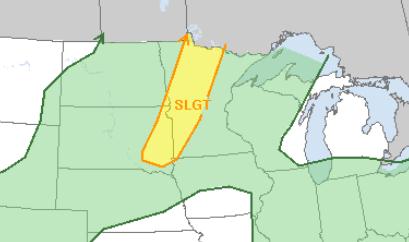 Slight Severe Threat
Slight Severe Threat.
A few storms later today and tonight may exceed severe limits
(especially with hail size) across central, western and northern
Minnesota, according to SPC.
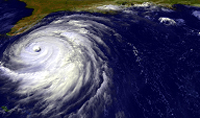 September 10
September 10. Date when hurricanes are most likely to strike the USA mainland. We are almost halfway thru hurricane season.
 Twin Cities: Warmest Year To Date On Record
Twin Cities: Warmest Year To Date On Record. 2012 is turning out warmer, to date, than 1987
or 2006, the previous records for warmest years. St. Cloud and Eau
Claire are also having their warmest year. Details from the Twin Cities
NWS.
 Meteorological Summer.
Meteorological Summer.
Temperatures from June 1 thru the end of August ran 3.5 F. warmer than
average in the metro, nearly 3" drier than average. Source: Twin Cities
NWS.
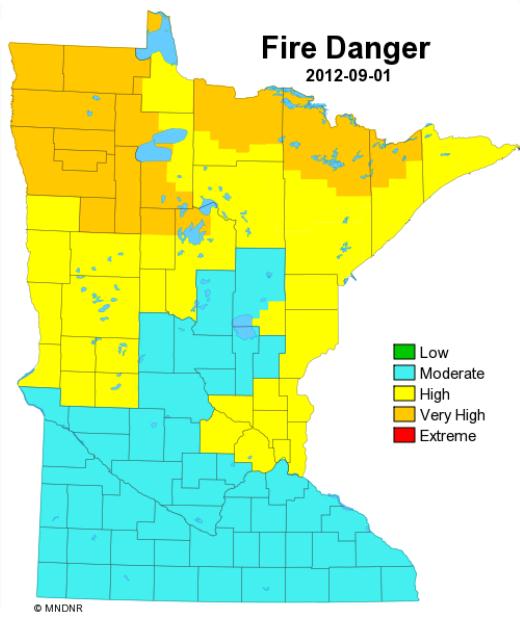
 Growing Fire Danger
Growing Fire Danger.
The Minnesota DNR is tracking very high fire danger over far northern
Minnesota; burning restrictions are in place, statewide. (upper right).
Hurricane Isaac Storm Surge Reversed Flow Of Mississippi River. Just when you thought you'd read everything about Isaac, along comes this story from
The Christian Science Monitor; here's an excerpt: "
As hurricane Isaac reached southeastern Louisiana as a Category 1 storm earlier this week, it did something unusual to the Mississippi River: It threw the river into reverse. For nearly 24 hours, according to the US Geological Survey,
Isaac's storm surge drove upriver at a pace nearly 50 percent faster
than the downstream flow. This backflow produced a crest some 10 feet
above the river's prestorm height at Belle Chasse, La., in
flood-beleaguered Plaquemines Parish southeast of New Orleans. The surge added eight feet to the river's height at Baton Rouge,
father north. Isaac had help. A scorching, rain-starved summer in the
middle of the country sent river levels to lows not seen since a
similar drought struck the region in 1998, easing the Mississippi's flow."
Photo credit above: "
High winds from hurricane Isaac toppled signs and caused flooding and power outages in New Orleans Wednesday." Ann Hermes/The Christian Science Monitor
We're Almost Over The Hurricane Hump For This Storm Season.
The date you probably want to avoid a Caribbean cruise is September 10.
That's the day when landfalling hurricanes are most likely to strike
the USA. More details from
The Houston Chronicle: "
When
Tropical Storm Leslie developed Thursday, this Atlantic hurricane
season jumped ahead of the record-setting 2005 season in its count of
named storms. That's because the 12th named storm in 2005, Tropical
Storm Lee, didn't form until Aug. 31. But the comparison ends there.
Just like Hurricane Isaac was no Katrina, most of this year's other
tropical storms and hurricanes have been pale imitations of their 2005
counterparts. That year, in July alone, Category 4 Hurricane Dennis
became the strongest hurricane ever in July. A week later, Emily became
the first Category 5 hurricane in July."
$2 billion in damage from Hurricane Isaac? Details from Bloomberg Businessweek below.
"...
The fact is, many people lack the resources to escape. Having
no money, no mode of transportation and no friends or family in safe
places means no choice but to weather the storm." - from an NBC News story on why some people won't (or can't) evacuate to a safe spot before a hurricane.
Photo credit above: "
A man makes his way down a flooded
street in a boat in the aftermath of Isaac Friday, Aug. 31, 2012, in
Ironton, La. Isaac is now a tropical depression, with the center on
track to cross Arkansas on Friday and southern Missouri on Friday
night, spreading rain through the regions." (AP Photo/John Bazemore)
Hurricane Isaac May Cost Insurers $2 Billion; AIR Says. Details from
Bloomberg Businessweek; here's an excerpt: "
Isaac,
the storm drenching Arkansas after making landfall in Louisiana as a
hurricane, may cost insurers as much as $2 billion in the U.S.,
risk-modeling firm AIR Worldwide said. The industry’s claims costs,
including wind and storm-surge damage to residential, commercial and
industrial onshore properties, will be at least $700 million, the
Boston-based firm said today in an e-mailed statement. The estimates are
a fraction of the $41.1 billion cost for Hurricane Katrina, the 2005
storm that struck Louisiana and caused flooding in New Orleans.
Hurricane Irene, which lashed the U.S. East Coast last year, cost $4.3
billion."
Photo credit above: "
Two sailboats, the Sweet Dreams,
foreground and the Caribe, were swept from their docks by Hurricane
Isaac to the parking lot in front and beside Shaggy's at Pass
Christian, Mississipi, on Friday, August 31, 2012." (Tim Isbell/Biloxi Sun Herald/MCT)
149 Photos Capture Isaac's Fury.
Huffington Post
has a good recap, and there's only so much you can convey about a
hurricane via text. The photos tell the story in a way no narrative ever
will. Many locals, officials and members of the media didn't pay Isaac
the respect it was due. Intensity (the "category" of the storm) is
important when estimating storm surge coming ashore, but in the end the
track and forward speed of the storm is even more important when
calculating the duration of the storm surge and total rainfall amounts.
Isaac stalled, stuttered and sputtered, hitting Louisiana twice as a
Category 1 hurricane, but that big, lazy loop prolonged the extreme
rains (and 8-12 foot storm surge), allowing a Category 1 storm to create
damage more typically found in a Category 2-3 hurricane. More details: "
As Gulf Coast states began to assess the damage from Hurricane Isaac, photos and video started to trickle in of the devastation. Although the death toll has been minimal compared to Hurricane Katrina, fatalities have occurred, and damage was extensive in some regions. Rising floodwaters from Isaac have forced thousands of evacuations, catching many by surprise, reported the Associated Press. Pictures of Isaac's impact
reveal residents and homes caught in flood conditions. Up to half of
Louisiana was left powerless on Thursday, and hundreds of thousands were
in the dark in Mississippi."
Flooding Spreads North. Jalen Brown captured this photo of severe flooding at Pine Bluffs, Arkansas Friday. Pic via
Twitter.
Isaac Rainfall Totals. NOAA data shows over 20" for metro New Orleans. Vero Beach, Florida picked up 16.6" over 4 days.
Tropical Swirl. Yes, those high clouds spreading
into southeastern Minnesota are the forerunners of "Isaac", which has
lost all tropical characteristics. Rain may spread as far north as Iowa
and southern Wisconsin, the best chance of flooding from Missouri into
central Illinois. IR satellite image:
Naval Research Lab.
Isaac: Equal Opportunity Soaker. NOAA HPC prints out
some 3-4"+ rainfall amounts from the Tennessee Valley into the Mid
Atlantic region and New England by Friday, spiked by the soggy remnants
of Isaac.
Billion Dollar Flood-Protection System Around New Orleans Proves Reliable.
It passed the first test, a Category 1 hurricane. Will it withstand a
Category 4 or 5? We'll see, but so far so good, as reported by
The Washington Post; here's an excerpt: "
Seven
years ago, the Army Corps of Engineers was desperately trying to plug
breaches in the city’s broken and busted levee system. Since those
catastrophic days, the Army Corps has worked at breakneck speed — and
at a cost of billions of dollars — to install new floodgates, pumps,
floodwalls and levees across New Orleans. The work paid off. A day
after Isaac hit New Orleans on the seventh anniversary of Katrina,
officials said the 130-mile flood protection system did its job."
Photo credit above: Vincent Laforet, Pool, File - Associated Press). "
In
this Aug. 30, 2005 photo, floodwaters from Hurricane Katrina pour
through a levee along Innter Harbor Navigational Canal near downtown New
Orleans, LA, a day after Katrina passed through the city."
Hurricanes Don't Scare Natural Gas Anymore. Fracking
has changed the equation; gas and oil prices no longer spike (as much)
when a hurricane is churning into the Gulf of Mexico, littered with
drilling rigs.
Marketwatch explains: "
Even
with much of the Gulf of Mexico’s energy production shut down as
Hurricane Isaac approached the region earlier this week, the
natural-gas market barely blinked — and that’s exactly what analysts
said would happen. “Natural gas did not react like it has in previous
storms because, with the rapid development of shale gas over the last
several years, the Gulf is increasingly less important to overall gas
supply,” said Kim Pacanovsky, managing director and senior research
analyst for oil and gas at MLV & Co. in New York. As of Thursday,
about 72.5% of the current daily natural-gas production in the Gulf was
shut-in because of Isaac, according to U.S. government data. Price
action in natural-gas market over the past few days, however, indicates
just how little concern the market has for the production disruption."
Storm Psychology: Why Do Some People Stay Behind? Great question, and
NBC News
does a good job providing credible reasons why many people can't (or
won't) evacuate to higher ground in advance of a hurricane. Here's an
excerpt: "
It’s the question so many of us have while watching news coverage of
a hurricane or tropical storm like Isaac: Who are these people who
don’t leave home even as an angry storm is advancing – and what are they
thinking?! The short answer: For some, the up-and-leaving idea isn’t
as easy as it sounds to those of us watching from a safe and dry
distance. Actually, a 2009 article published in the journal Psychological Science
sought to examine the reasons some people won’t evacuate, despite the
urging or even mandates of city and state officials, by asking a group
who would know: Hurricane Katrina survivors who weathered the storm at
home."
Photo credit above: "
Tony Miranda takes a break from
clearing out his home after it was flooded by Hurricane Isaac in
LaPlace, La., Friday Aug. 31, 2012." (AP Photo/The Advocate. Arthur D. Lauck)
Magnificent Eruption On The Sun.
Spaceweather.com has the details; here's an excerpt: "
A
filament of magnetism curling around the
sun's southeastern limb erupted on
August 31st, producing a coronal mass ejection
(CME), a C8-class
solar flare, and one of the most
beautiful movies ever recorded by NASA's
Solar Dynamics Observatory."
So Far So Good. My
expectations go down on major holiday weekends, although the odds of
success are certainly higher on Labor Day weekend than Memorial Day or
the 4th. The atmosphere is more stable (cooling at the surface, still
fairly warm aloft) - so the odds of T-storms come down by late August
and September. This is the month to get married outdoors, btw. Forget
June. Unless you're already married, in which case your (old) spouse may
not be happy about a September wedding. Under another perfect sky
Saturday highs ranged from 72 at Grand Marais to 85 St. Cloud, 86 Twin
Cities and 88 Redwood Falls.
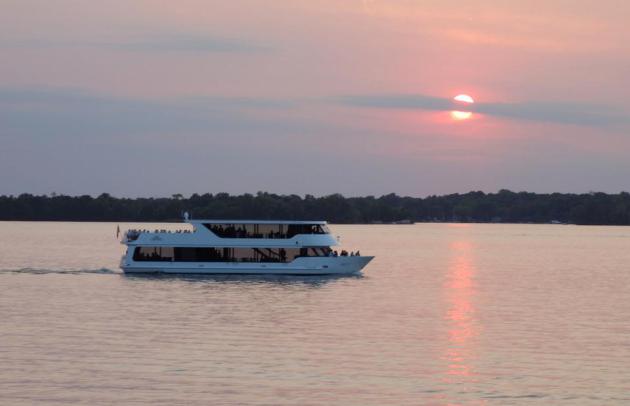 Paul's Star Tribune Outlook for the Twin Cities and all of Minnesota
Paul's Star Tribune Outlook for the Twin Cities and all of Minnesota
TODAY: Sticky sun. Dew point: 61. A few strong storms far northern/western MN by afternoon. Winds: South 10-15. High: 87
SUNDAY NIGHT: More clouds, slight chance of a shower or T-storm. Low: 70
LABOR DAY: Some sun, stray T-storm possible, still muggy. Dew point: 63. High: 88
TUESDAY: T-storms, then warm sun. Low: 69. High: 84
WEDNESDAY: Clearing, turning cooler and less humid. Dew point: 53. Low: 63. High: 78
THURSDAY: Plenty of sun, comfortable. Low: 58. High: 75
FRIDAY: Clouds increase, probably dry. Low: 56. High: 74
SATURDAY: Intervals of sun, September-like. Low: 57. High: 73
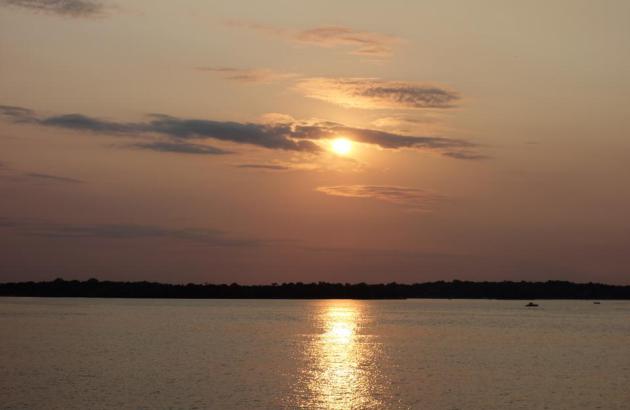
Weather on Hold
When people live in other, less fortunate parts
of America ask me what Minnesota is like I invite them to the State
Fair. Nothing sums up our agrarian, lake-centric culture better than
strolling & munching your way down Dan Patch Avenue.
After a heart-straining jolt of sugar & grease some people just can't help but speak their minds.
My earliest memory from my KARE at the fair:
"Paul...you look better on TV!"
Thank you ma'am. May I have another?
I'm
looking forward to loitering at the Star Tribune booth this afternoon.
I'm hoping warm sun and a lack of purple blobs on Doppler will keep
natives in an agreeable mood.
While the soggy dregs of Isaac soak the Ohio
Valley we enjoy sticky sun; dew points rising into the 60s, with highs
ranging from 85-90. Not bad. A weak frontal boundary sparks a stray
T-shower tonight and Monday, more numerous T-storms Tuesday, before a puff of
Canadian air cools us off the latter half of the week.
We're heading into fire season; a high risk in the metro, very high up north.
September 1, 1894: an area the size of the Twin
Cities metro scorches Hinckley, killing nearly 800 people; the deadliest
blaze in Minnesota history.
Since then we've been very lucky.
Climate Stories....
New AMS Statement on Climate Change. Here are more details (and the complete text from AMS) courtesy of The
American Geophysical Union Blog: "
The
AMS has released it’s updated statement on climate change, and as
expected, it is considerably more direct than the previous one issued
in 2007. This is no surprise since the last 5 years have seen
a remarkable increase in understanding, along with 5 more years of
observations and measurements. Full disclosure here: I’ve been a proud
member of the American Meteorological Society for around 35 years. I
also serve on the AMS Committee for Station Science. For
someone wanting a non-political look at what we know, I highly recommend reading the statement. It’s well done and to be honest
on the conservative side. A good example is the portion that talks
about sea level rise of 10-28 inches. If sea level continues to rise
only at the rate it is rising now it will exceed 10 inches. The next
IPCC summary of the science will (from everything I’ve read over the
past year or so) forecast a likely rise of over a foot by the end of
this century. "
Climate Change In The Great Lakes. Here's an interesting infographic from
Circle of Blue Waternews.
Is Geoengineering The Answer To Climate Change? Tinkering with the atmosphere - what can possibly go wrong? Here's an excerpt of an interesting article at
Smithsonian Magazine: "
Climate change used to be thought of as a long-term worry; now, there’s good reason to believe we’re already encountering its effects.
As the problem grows more urgent, some say we ought to take a radical
approach: Instead of struggling in vain to limit greenhouse gas
emissions, we should try to engineer systemsto
directly stop the warming of the planet. This approach is known as
geoengineering, and it might be the most controversial area in climate
science. The term encompasses a wide variety of techniques. One company
tried to fertilize the ocean with iron, to encourage the growth of algae to absorb excess carbon dioxide. Other scientists have suggested spraying clouds with seawater
to increase their whiteness—and thus reflectivity—reducing warming by
bouncing light back out to space. The U.S. government has even
considered gigantic, sun-blocking mirrors in outer space as a last-ditch option if climate change hits a tipping point."
Photo credit above: "
Geoengineering could replicate the cooling effects of a massive volcanic eruption as a tool to reduce climate change." Photo via Wikimedia Commons
GOP Platform Highlights The Party's Abrupt Shift On Energy, Climate. Here's an excerpt from
The Washington Post: "
Over
the past four years, the Republican Party has undergone a fairly
dramatic shift in its approach to energy and environmental issues.
Global warming has disappeared entirely from the party’s list of
concerns. Clean energy has become an afterthought. Fossil fuels loom
larger than ever. And one way to see this shift clearly is to compare
the party’s 2008 and 2012 platforms. It may seem difficult to believe
now, but back in 2008, the Republican Party’s platform (pdf) had a long and detailed section on “Addressing Climate Change Responsibly.” Here’s how it opened:
"The same human economic activity that has brought freedom and
opportunity to billions has also increased the amount of carbon in the
atmosphere. While the scope and longterm consequences of this are the
subject of ongoing scientific research, common sense dictates that
the United States should take measured and reasonable steps today to
reduce any impact on the environment. Those steps, if consistent with
our global competitiveness will also be good for our national security,
our energy independence, and our economy."
Photo credit above: "
No longer a Republican concern." (JOHN MCCONNICO / AP)







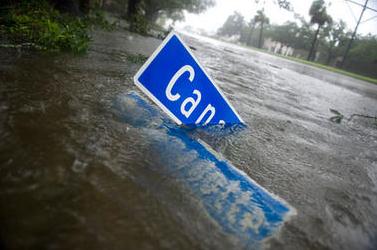
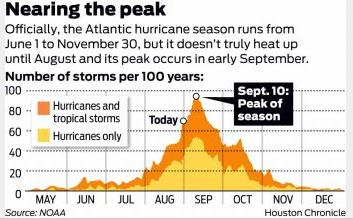
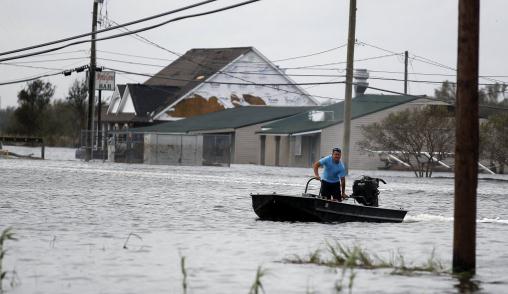
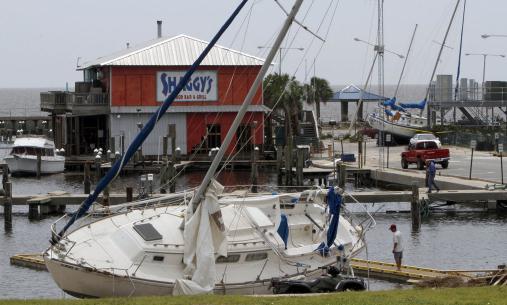
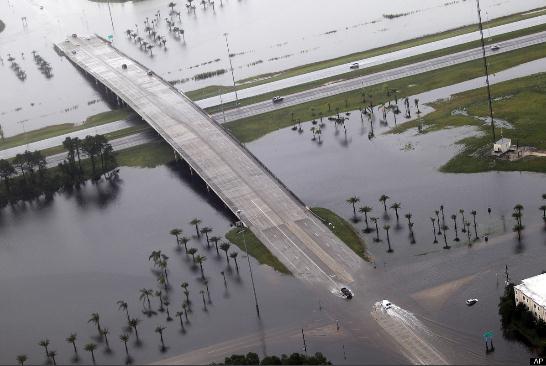

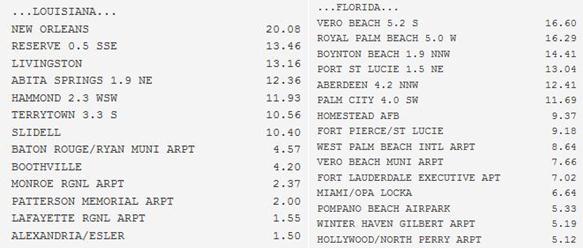
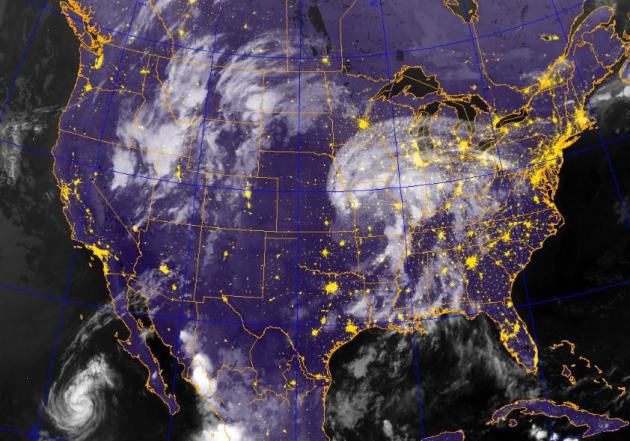
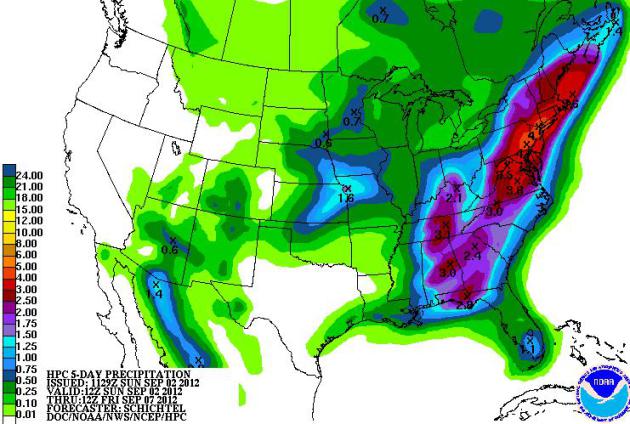

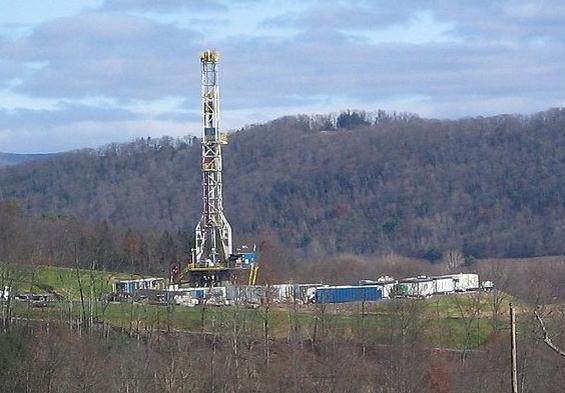
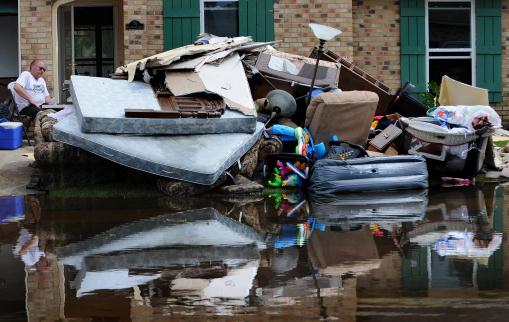

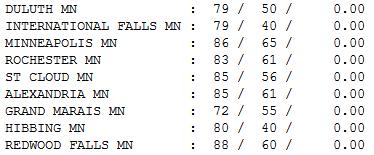






No comments:
Post a Comment